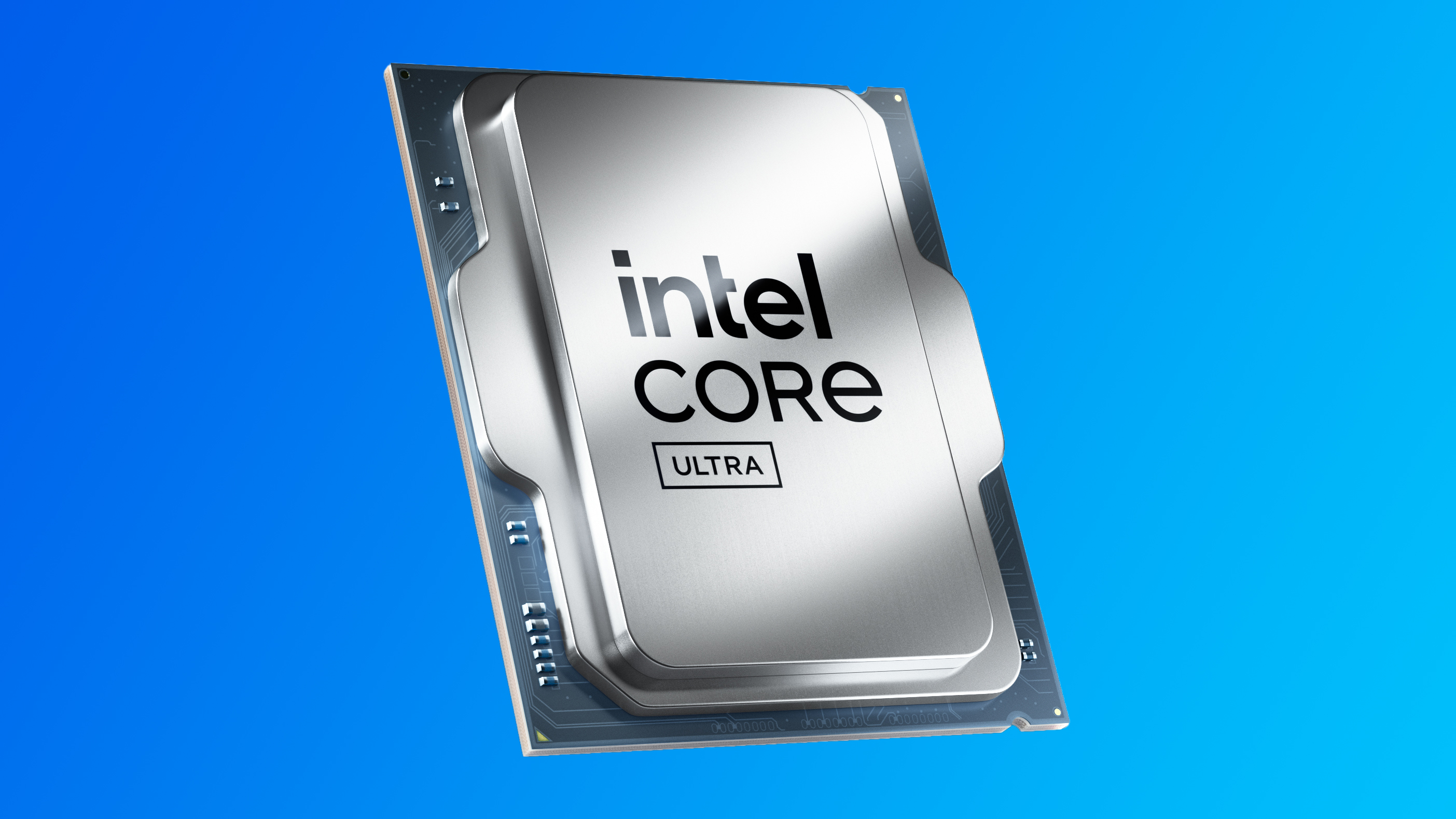Intel's lackluster Arrow Lake appears to have a refresh inbound — Arrow Lake Refresh appears in reference document
Will we get a better gaming experience the second time around?

If we are to believe a leaked manual for an upcoming Intel W880 motherboard, the Intel Arrow Lake-S processor will seemingly have a refresh successor. Popular hardware leaker momomo_us shared an image of the purported motherboard reference document with the CPU labeled Arrow Lake S/Arrow Lake S Refresh.
Previous rumors point to another generation of the Arrow Lake architecture, focusing only on high-end K and KF chips. So, it would make sense for motherboards designed for high-end workstations to take advantage of this refresh. Unfortunately, we do not see any other information on the document, so we will have to wait and see if manufacturers of more mainstream consumer and enthusiast motherboards will release new models for this alleged Arrow Lake update.
The Intel Core Ultra 200S series arrived on the scene in October 2024, around two months after the company released its disastrous financial report. Team Blue sorely needed a win to help it get back on course—unfortunately, the Arrow Lake wasn’t it, as sales for its latest processor stagnated just a week after its launch. After half a year on the market, the company still struggles to sell its AI chips, with many customers preferring the older Raptor Lake CPUs.
pic.twitter.com/DIWSDxHMXjMay 30, 2025
One reason behind this could be the chip’s lack of gaming prowess. It has consistently trailed behind AMD’s outstanding offerings, especially the Ryzen 7 9800X3D, and was even outperformed by Intel’s own last-generation chips. And even though the Arrow Lake processors boast an NPU and offer higher AI processing power, most buyers don’t care about that. This, combined with the higher prices, meant that there was low demand for these CPUs.
If the Arrow Lake-S Refresh chips are indeed arriving, Intel must address the gaming performance issues. Otherwise, buyers would shun them and instead flock towards options that deliver more FPS and do not bottleneck other components.
Despite all the negativity in the gaming space for the Arrow Lake-S chips, Intel has made some interesting innovations in the processor. It has improved power consumption and efficiency, reducing its cooling requirements. It’s also a productivity powerhouse, with the Intel Core Ultra 9 285K beating most of its competitors in Cinebench.
This was the first Intel desktop CPU to use a chiplet-based design, so it’s bound to have first-generation hiccups. Hopefully, the company can fix some of the concerns with the refresh, allowing us to get the most out of the Arrow Lake architecture.
Get Tom's Hardware's best news and in-depth reviews, straight to your inbox.
Follow Tom's Hardware on Google News to get our up-to-date news, analysis, and reviews in your feeds. Make sure to click the Follow button.

Jowi Morales is a tech enthusiast with years of experience working in the industry. He’s been writing with several tech publications since 2021, where he’s been interested in tech hardware and consumer electronics.
-
usertests ReplyWill we get a better gaming experience the second time around?
Nothing interesting will happen on the CPU side. Even the long dead rumor of 8+32 cores wouldn't help gaming performance. I guess 1-4% gains from clocks would be helpful for comparisons.
On the GPU/NPU side, they could improve it, but probably won't in a substantial way. -
ezst036 I sincerely hope this starts a new attitude at Intel that maybe their sockets and platforms might be useful for longer than just the two cycle.Reply
Being not in the strongest market position right now, having their sockets go over more generations would be a show of good-will and improved customer relations.
There are absolutely no downsides for OEM builders with this, especially since they are often times on autopilot with their business purchases anyways. But this helps those of us who do custom builds and are the mouthpieces on the streets generating buzz with word of mouth praise. -
bit_user If this had been like Raptor Lake was to Alder Lake, it could be a real hit. There are some great cores, inside of Arrow Lake, that really want to shine. Sadly, I think we're looking at like a Gen 14 Raptor Lake vs. Gen 13 situation, here.Reply
No matter what, I'm planning on waiting until Nova Lake. If I buy anything Intel, this year, it'll be a B770 dGPU. -
bit_user Reply
We already know Nova Lake will be on a new socket, though.ezst036 said:I sincerely hope this starts a new attitude at Intel that maybe their sockets and platforms might be useful for longer than just the two cycle. -
TerryLaze Reply
A gigantic chunk of office PCs are socketed...baboma said:Intel doesn't give a diddly about socketed CPUs for desktop. Its turnaround doesn't depend on the tiny minority of DIY gamers.
All the Hp dell etc PCs that are in every single office around the world are socketed desktop CPUs.
(Yeah I know there are a lot of miniPCs and handhelds and stuff like that, still) -
usertests Reply
I mentioned gaming because it's in the Tom's Hardware article subhead: "Will we get a better gaming experience the second time around?" The answer is no, unless +1-4% counts.baboma said:It's fine for wanting things to help further your hobby, which presumably is PC gaming. But understand where you are in the overall picture, which is one minnow in a pretty big ocean. Intel has much bigger fish to fry than to worry about what some gamers on some forum think.
There were rumors months ago of an 8+32 core Arrow Lake Refresh, which would have improved multi-threaded performance, but further rumors asserted it was cancelled. Things get tested behind the scenes that won't make it to market, like Meteor Lake on desktop.
Arrow Lake has moved to a chiplet design, which in theory could allow Intel to update the NPU independently from the CPU cores, for example. However, anything involving differently sized chiplets is a lot more work than bumping up clocks by 100-200 MHz and calling it a day.
I'll give Intel this: the Arrow Lake-S iGPU is substantially faster than the Radeon 610M found in Ryzen 7000/9000 desktop CPUs. Because of the improved iGPU and the efficiency improvements, the Arrow Lake office PCs will be nice purchases when they hit the used/refurbished market. -
thestryker These most likely are going to exist as an OEM centered refresh. I'd be surprised if anything fundamentally changed. There's no room for meaningful clock scaling on N3B with the design so I'm not even sure a refresh would be as good an improvement as RPL to RPL-R was.Reply
The only possibilities I see for additional performance are a redesigned SoC tile and/or using an Intel node for the Compute tile. Of those two the only one I think might be a remote possibility is SoC tile because it may be possible to use the same one as PTL will if the rumors regarding the memory controller being moved to the Compute tile are wrong.
I would love for my cynicism to be wrong, but I feel like if something was really coming there would be indications either official or leaks. -
usertests Reply
I think Intel can almost always find another 100-200 MHz if they look for it. 285K (P-core) is boosting to 5.7 GHz, 265K to 5.5 GHz, 245K to 5.2 GHz. At least the lower parts can inch up.thestryker said:There's no room for meaningful clock scaling on N3B with the design so I'm not even sure a refresh would be as good an improvement as RPL to RPL-R was.
The only possibilities I see for additional performance are a redesigned SoC tile and/or using an Intel node for the Compute tile.
NPU could be boosted from 13 to 16 TOPS to match Hawk Point desktop APUs, as if that's a fight that matters.
I'll throw out this wild card: They could put a 6P+12E 250/255K in the gap between the 6P+8E 245K and 8P+12E 265K. From a yield perspective that product could make more sense than a 245K.
But if they did redesign tiles, that would be much more interesting than any of this. -
Mr Majestyk At best, you'll see 50TOPS NPU, a 100MHz clock boost, all limited to K series IMO. They can't redesign the chip for a refresh. You'll have to wait for Nova Lake. Honestly, I'd prefer they did Panther Lake S which supposedly puts the memory controller back on the cpu tile and improves the ringbus.Reply -
thestryker Reply
You've nailed the problem. I'm sure they could improve the 265K/245K bins, but there's just not enough room on the 285K. Skatterbencher was able to get their 285K to 5.8Ghz and this is the start of their conclusion:usertests said:I think Intel can almost always find another 100-200 MHz if they look for it. 285K (P-core) is boosting to 5.7 GHz, 265K to 5.5 GHz, 245K to 5.2 GHz. At least the lower parts can inch up.
The Core Ultra 9 285K is Intel’s top of the line Arrow Lake processor and it certainly feels they squeezed the chip for all it has. It’s one of the most difficult chips I’ve ever had the pleasure of tuning.
Especially overclocking the P-cores is like trying to squeeze blood out of a stone. It doesn’t seem to scale with voltage or have any headroom with the default curve. All that’s possible is getting the non-favored cores to run close to 5.7 GHz and lift the all-core frequency as high as possible.